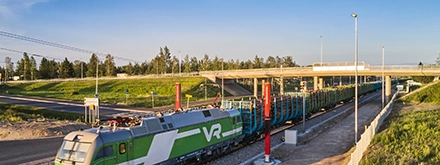Metsä Group’s Kemi bioproduct mill, which started up on 20 September 2023, will consume 7.6 million cubic metres of wood every year, representing an increase of 4.5 million cubic metres compared to the old mill. Of this additional volume, 3.5 million cubic metres will be procured from Finland and one million from Sweden. Source: Timberbiz
The bioproduct mill’s wood supply is based on regenerative forestry principles, which aim to verifiably strengthen nature compared to its current state by 2030. Among other things, regenerative forestry means adding more deciduous trees, old trees, decaying wood and burnt wood to commercial forests. For example, we offer our owner-members the Metsä Group Plus forest management model, which sets higher requirements than current certification systems, and organise a competition called Renew Metsä. Both of these follow the principles of regenerative forestry.
Metsä Group procures the bulk of its wood from its owner-members in Finland, that is, from more than 90,000 members of Metsäliitto Cooperative, who own around half of Finnish private forests. The additional use of pulpwood will increase forest owners’ annual wood sales income by around EUR 100 million. Sales income from log wood will also increase significantly. The Kemi bioproduct mill’s increased wood consumption will generate around 1,000 new jobs in harvesting, wood transport and forest management.
“The wood consumed at the Kemi bioproduct mill will be procured from commercial forests. We will not procure wood for the mill from old-growth forests that should be protected. According to our estimates, around 60% of the wood used at the bioproduct mill will come from thinning sites. This will clear the backlog of thinning in our northern forests while helping trees grow into sturdy log wood suitable for use in wood products offering long-term carbon storage,” says Juha Jumppanen, EVP Wood Supply and Forest Services, Metsä Group.
Northern Finland is home to vast peatland areas, which are special in terms of greenhouse gas and water emissions. In 2020, Metsä Group revised its peatland management guidelines, which now favour continuous cover forestry methods.
Rail transports will account for approximately two thirds of the raw wood used at the Kemi bioproduct mill. Thanks to this, the emissions from wood transports will decline by around 20 per cent per cubic metre. The transports are powered by VR’s latest engines. The Vectron electric locomotives can handle loads as heavy as 2,500 tonnes, which means approximately 20%–25% more wood per train.
“We’ve designed our wood deliveries in Kemi to meet our emissions reduction targets. In addition to using electric locomotives for wood deliveries, we have electrically powered autonomous cranes in the woodyard. We’ll continue to reduce our emissions across the wood supply chain,” says Jumppanen






